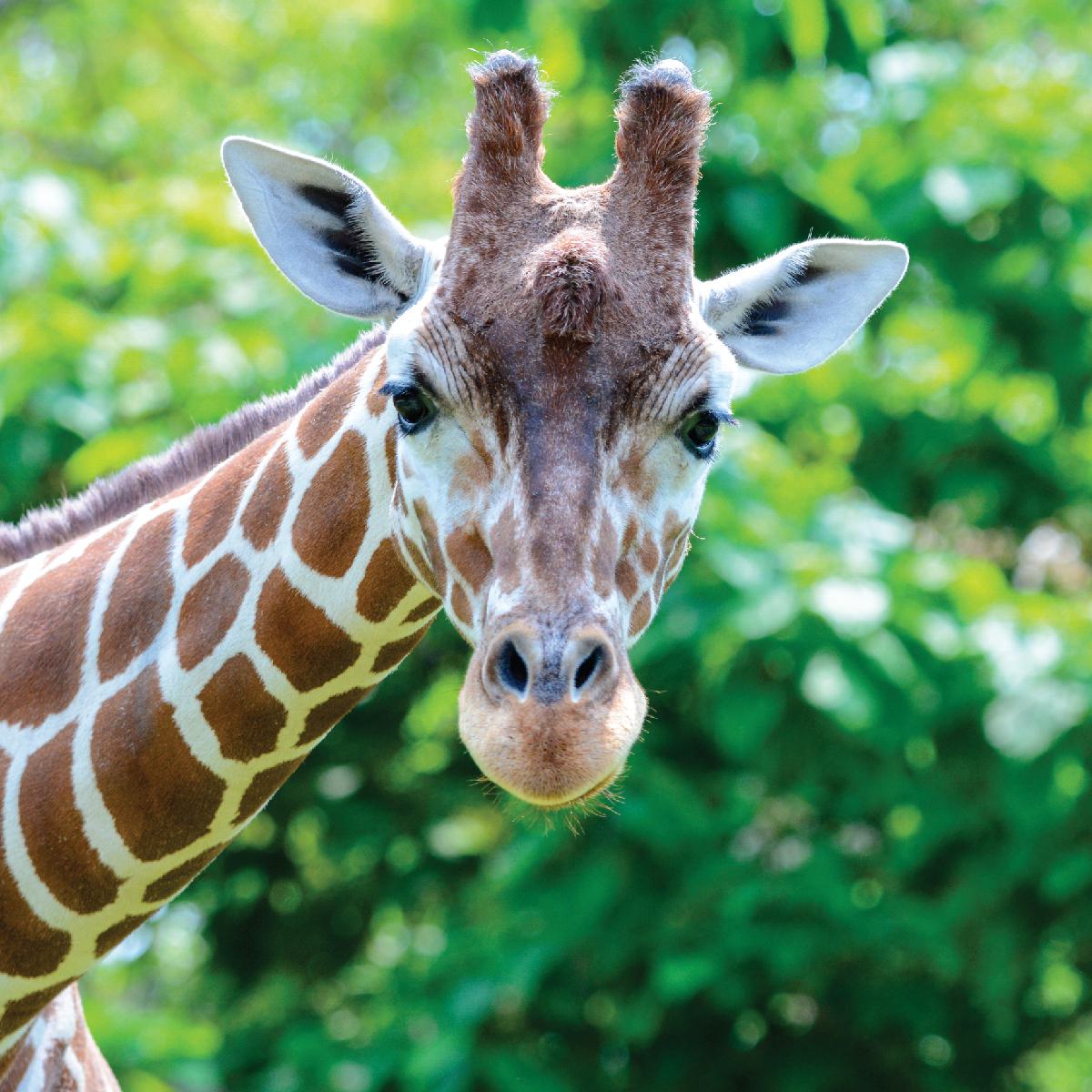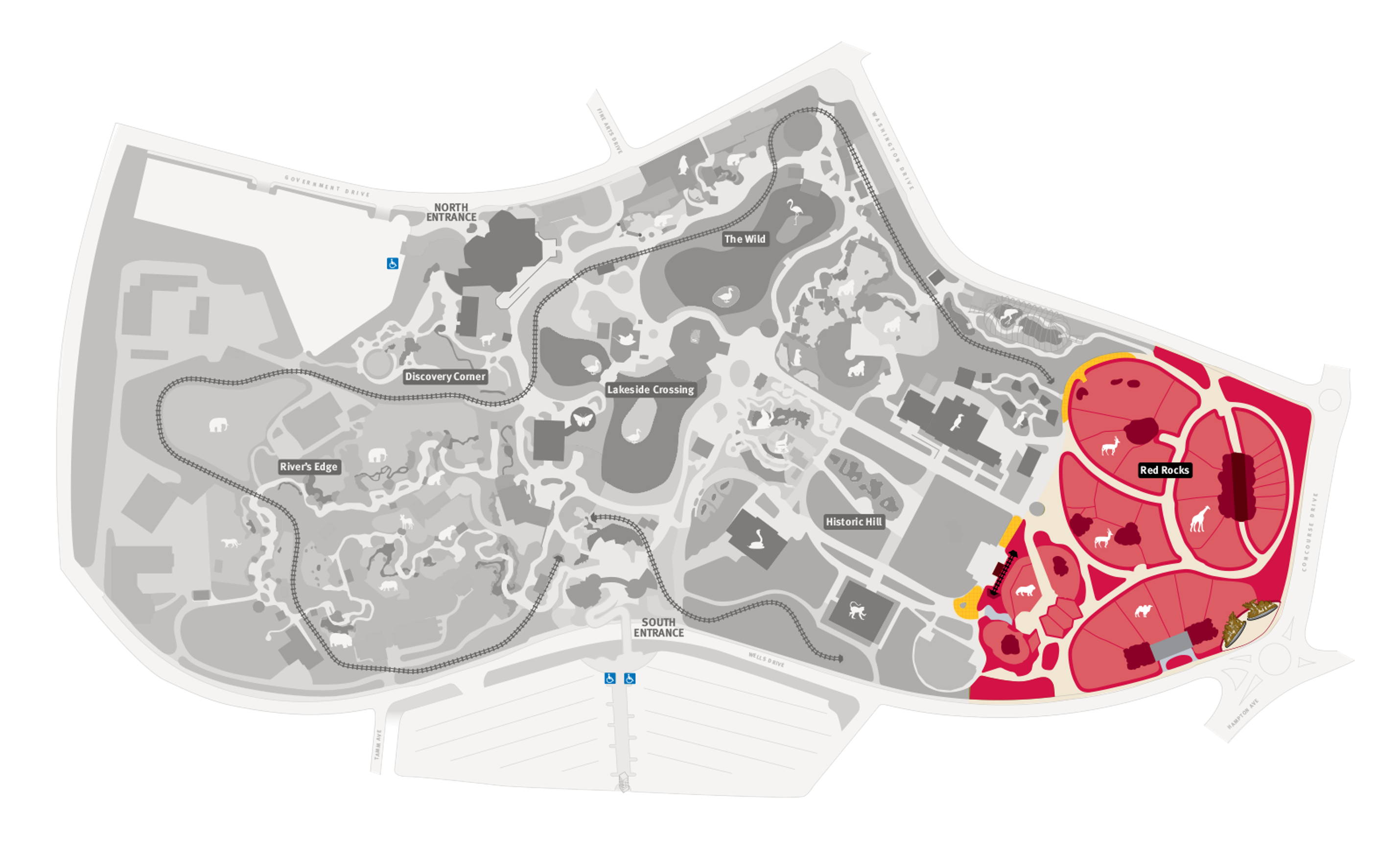
Reticulated Giraffe
Giraffa camelopardalis reticulata
Did you know?
- All giraffes are part of the Giraffidae family, a family they share with only one other species, okapis.
- Reticulated giraffes have large brown spots separated by cream-colored lines.
- They live in savannas in eastern African.
- After a 14-month pregnancy, a female gives birth to a single baby.
- Giraffes are the tallest living land animal.
Adaptations
All giraffes have exceptionally long necks that allow them to reach food sources other animals cannot reach. Adult males are 16 to 18 feet tall, while females are somewhat smaller at 14 to 16 feet. Due to their height, their competition for food is minimal. They have great eyesight and hearing, which enable them to spot animals a mile away and keep them safe from predators. Their spotted pattern helps them camouflage.
Raising Young
A giraffe’s pregnancy lasts about 14 months. A female has one baby, though twins occur on rare occasions, and it is birthed with the front feet first. Mother giraffes are very affectionate and protective toward their babies, touching and licking them frequently. When the calves are a month old, they join a "nursery" group made up of several mothers and their calves. The young are always being watched over by one of the adult females.
Threat Level
- Unknown
- Common
- Near Threatened
- Threatened
- Endangered
- Critically Endangered
- Extinct in the Wild
Endangered
The Reticulated Giraffe's population is decreasing, and this species faces a very high risk of extinction in the wild.
Range
Eastern Africa
Habitat
African savannah

We care about reticulated giraffes
Reticulated giraffes were recently listed as an endangered species. They suffer from a variety of problems, including habitat loss and hunting.
We support three female giraffes at the Saint Louis Zoo. The Saint Louis Zoo also participates in the Species Survival Plan for giraffes. This is a cooperative breeding program, with a number of zoos working together to ensure the survival of the species. Additionally, we have been working to save threatened species in the wild through the Saint Louis Zoo WildCare Institute Center for Conservation in the Horn of Africa, which supports field conservation of reticulated giraffes and other species in northern Kenya.
Learn more about our conservation efforts for giraffes in the wild.
Find this animal in Red Rocks

SAINT LOUIS ZOO ZONE
Red Rocks
At Red Rocks, you’ll view some of the world’s most powerful predators living near some of the world’s most graceful prey. Tigers, zebra and giraffes all share the natural rocky boulders and outcroppings as their territory. With shading trees and a bird or two among the mammals, Red Rocks is a great place to spend a day at the Saint Louis Zoo.

